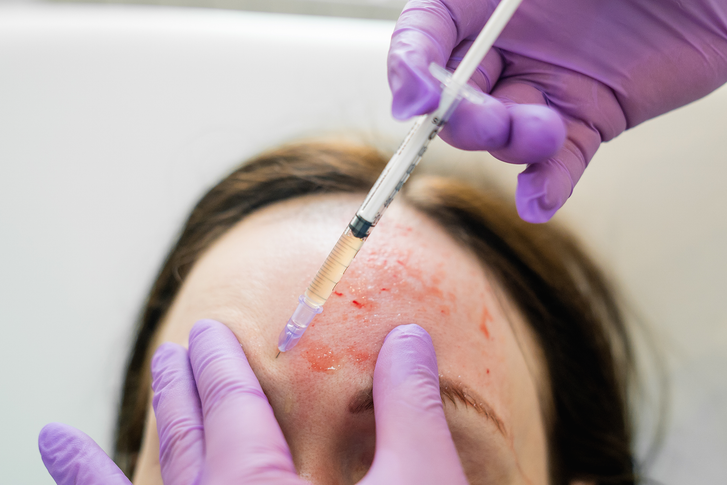A PRP Facial is a relatively new procedure in the realm of anti-aging services available. Coined the ‘Vampire Facial’ by Kim Kardashian, it has been found to assist in minimizing facial lines and wrinkles. It exists as an alternative to more costly and invasive plastic surgeries. Though research is being constantly done on the efficiency of the treatment, it has already been confirmed to help naturally reverse a variety of skin blemishes, from wrinkles to acne scars, and rejuvenates the skin.

What is PRP?
Stem cells can be found in every part of the body, including our skin. The PRP substance activates the stem cells that lie dormant in the skin on the face through certain growth factors found in the platelets. When activated, those stem cells grow new, younger-looking skin. Thanks to the Vampire Facelift/PRP, you can now enjoy a younger looking appearance through a very safe and effective procedure. It triggers the production of collagen, which is what is responsible for filling in the face. The absence of collagen which is responsible for the wrinkles that are found in older people.
In addition to its recent use in the dermatological field, however, PRP has a rich history of being used by orthopedic doctors in the treatment of joint injuries– primarily ankles, knees, and elbows. PRP has been a relied-upon source for regeneration for years, and shows great promise in the field of dermatology.
The Procedure
PRP facials, while cosmetic in nature– are medical procedures. A PRP Facial Procedure normally begins with blood being drawn– this blood can be drawn from any vein, of course, but in most cases it will be from the patient’s arms. This is a process that only takes minutes, and is largely painless– just the small prick of a needle, and before long all the blood required is taken.
From there, the sample that is gathered is put through a centrifuge, which will spin the samples at extremely high speeds in order to separate the blood into its components by density– primarily, it will separate plasma and platelets from the red blood cells. The PRP is extracted from this product– this special section of the sample is filled with blood platelets, the cell fragments that are responsible for clotting.
Once the PRP is harvested and ready to be administered to the patient, their face will be numbed with local anaesthetic– and then the sample will be applied to the face, pushing through into the lower lawyer of the skin. It is applied to the areas that the patient needs the most, which change, of course, on a case by case basis– injections can be focused in laugh lines, forehead wrinkles, crow’s feet, acne scars, any blemish or wrinkle present on the face.
During Treatment
The sample is able to penetrate the outer layer of skin and work its benefits in the lower layer because of a process that is known as microneedling. Generally, the plasma is spread over the patient’s face, over the area that the patient’s wrinkles are the most prevalent, and from there microneedling would be used to help the face absorb the protein that are present in the PRP. Microneedling is exactly what the name seems to imply– it is a process that creates a series of tiny, superficial pricks in the face using sterile, tiny needles.
Microneedling provides a few key advantages– of course, it provides an access route for the PRP to enter the dermis, where it can cause the most benefit, but the process of microneedling also stimulates the growth of collagen naturally, and because of that the two work in conjunction to help eliminate wrinkles and other signs marks of growth. Patients may experience some slight discomfort during the procedure, but the local anesthesia should ensure that it does not become outright painful in any way– if that is the case, you should alert the person administering your procedure immediately.
For best results, it is advised to take two treatments two months apart– overall, most patients notice better skin tone, volume, and the smoothening of wrinkles after their treatments. The treatment is safe for most everyone, save for those that have problems with clotting and other blood-related health problems.
After Treatment
After a patient’s PRP facial is over there are many symptoms that a patient may experience. Redness and inflammation are extremely common, and in rarer cases patients may develop bruising. But this should all clear up without any problem, and once it goes down, patients should begin to see results in wrinkle management and overall skin health.
However, it is important for a physician to manage their patient’s expectations, and, at times, for patients to do it themselves. It is important to remember that it is a nonsurgical treatment, and because of that, it will never have results that are the exact same as a face lift– due to the nature of a nonsurgical treatment vs. a surgical one.
It is best to consult your doctor or a physician to assist you in deciding which treatments are most likely to provide beneficial results to the skin.



